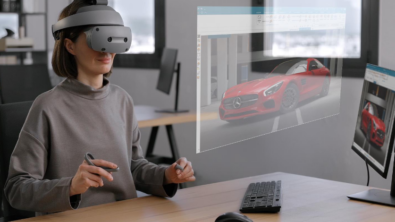The path to creating adaptable robots

Automation stands as the top solution for factories as industrial manufacturers strive to cut costs, enhance production lines, and make operations more adaptable. Digitalizing your factory for automation helps with ongoing labor shortages that may only be exacerbated as the demand for manufactured goods increases as well as lowering operating costs. However, for manufacturing systems and automation systems to work in perfect harmony and give the highest possible throughputs, the automation system, the robot, and the human must all be working together.
During an episode about advancements in robotics on our Digital Transformation podcast series, Siemens experts Rahul Garg, Vice President for industrial machinery vertical software strategy at Siemens Digital Industries software, and with Etienne Ferre, manager of the research and development at Kineo, elaborated the methods organizations use to ensure that humans and robots properly collaborate in an autonomous ecosystem.
Unstructured and structured environments
To make the most out of automation, humans and robots must be able to cooperate on the shop floor safely and efficiently. In most factory environments, human/robot collaboration comes with many variables that make achieving maximum optimization tricky. One of the key factors is the environment itself, which can be divided into two distinct classifications: structured and unstructured.
- Structured environments: The most common and oldest factory environment; the settings are predefined and controlled, enabling robots to operate predictably.
- Unstructured environments: An environment where there are dynamic, often unpredictable obstacles, such as humans, which requires robots to adapt.
Different factories will have different use cases for their robots and many organizations can get a lot of use out of robots that behave in preset manners. However, for businesses looking to push their automation capabilities to the next level, having robots that can perform tasks in unstructured environments is crucial. This is where Kineo comes in.
Dynamic path planning
Founded in 2001 and later acquired by Siemens in 2012, Kineo develops software libraries for path planning, collision detection, and flexible cable simulation. In unstructured environments that have robots and humans in the same workspace, human safety is the top priority. Kineo’s reactive path planning helps robots avoid humans in real-time.
Factories with unstructured environments may also have to contend with robots from multiple vendors and thus multiple programming methods. Kineo helps with both path planning as well as simplifying all robot programming. Kineo’s libraries are integrated into Siemens software like NX and Process Simulate, as well as software from many other companies. These tools help in automating robot programming and ensuring safe and efficient operations on the shop floor.
Additionally, Kineo can leverage the digital twin to accurately simulate robot activity, increasing warehouse safety while simultaneously facilitating optimization of processes. For example, when it comes to connecting cables of the robots, Kineo uses the digital twin to determine things such as whether the cable will be long enough to perform an action or the cable’s maximum tension. The digital twin can also simulate the gravity, the contact with the obstacles, contact with the other cable, and also the complex system that connects cables to the robot itself.
Beyond the possible
Kineo doesn’t stop at ensuring that robots can increase automation in both structured and unstructured environments. The company is also contributing to research that advances robotics through innovative software solutions which emphasize safety and efficiency. Currently, Kineo is helping develop a camera that observes the motion of human workers, and which will enable factory robots to adapt to human movements and change their trajectories in real time.
Creating robots that can work in unpredictable environments is the first step towards smart factories where humans and robots work in harmony at maximum efficiency. With rising operational costs and labor shortages, the time to begin your digital transformation and dive into automation is now. And safety is part and parcel towards guaranteeing a productive, autonomous factory. To learn how Kineo utilizes its software to ensure safe and dynamic work environments, check out our Digital Transformation podcast.
Siemens Digital Industries Software helps organizations of all sizes digitally transform using software, hardware and services from the Siemens Xcelerator business platform. Siemens’ software and the comprehensive digital twin enable companies to optimize their design, engineering and manufacturing processes to turn today’s ideas into the sustainable products of the future. From chips to entire systems, from product to process, across all industries. Siemens Digital Industries Software – Accelerating transformation.


